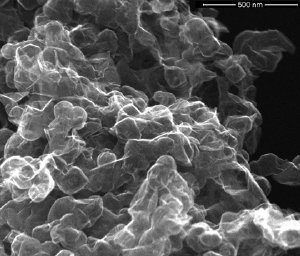Using nanometer-scale fins of graphene can help speed up ultracapacitors
Researchers led by John Miller have developed a new ultracapacitor design that uses nanometer-scale fins of graphene. They say that such an ultracapacitor can charge in less than a millisecond (normal ultracapacitors take a few seconds). The design uses electrodes that consist of up to 4 sheets of graphene. The graphene is formed so that it stuck out vertically from a 10-nanometer-thick graphite base layer.

The teams' next plan is to increase the capacitance of the device by making the nanosheets more parallel and tallerâattempting to find the ideal balance between creating more charge storage space and restricting the flow of ions in the electrolyte.

